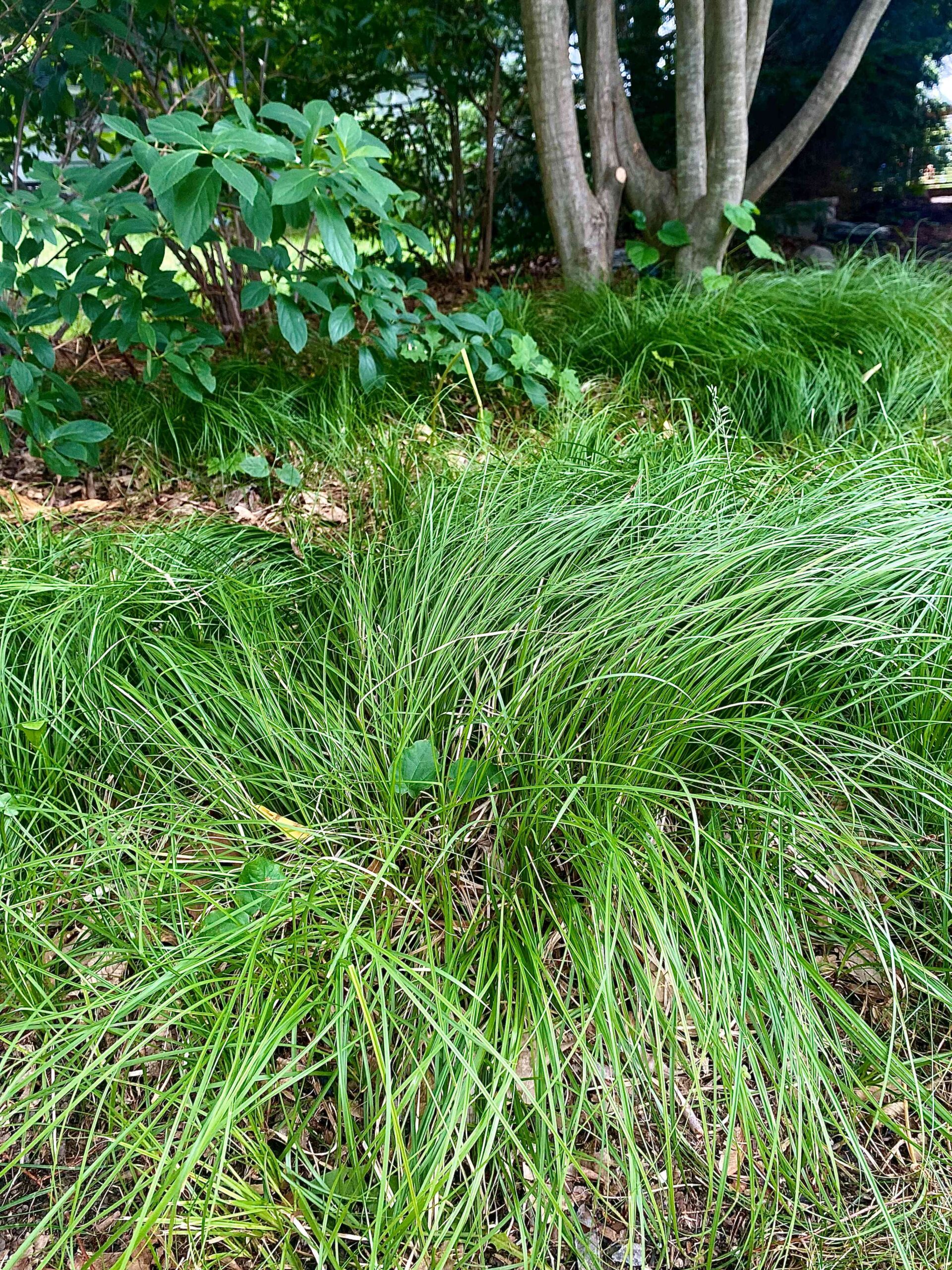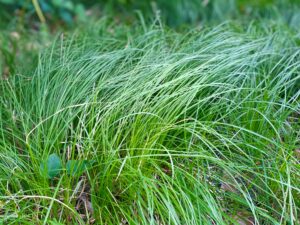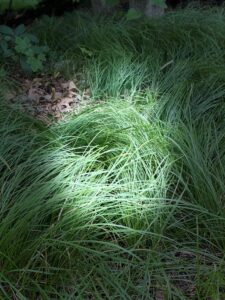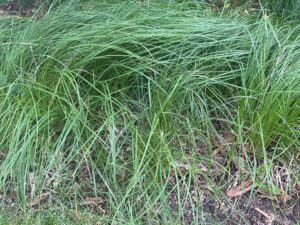If there was *one* shade plant I wish more people would swoon over …

…It would be CAREX, or sedges. There are hundreds of sedges to consider and I often use a mere 4 -5 varieties in our design work. After seeing the everyday, absolute value of Carex in my own garden, I’m ready to dive into using and integrating many more Carex throughout our garden designs.
Too few of my clients share my enthusiasm for this top-performing shade plant, so it’s time for a spotlight post on this essential garden plant.
Penn Sedge, shown here, or Carex pennsylvanica, will spread over time, and fill in a space, through its root structure, gracefully and subtly. Do you have a spot in your yard, to fill in a dry, shady zone, or near and under mature trees (as many homeowners seem to have in more established neighborhoods)? I have not watered, weeded or fussed with this plant in years, and it rewards our front door garden space with a luxurious green and dreamy coverage at the base of our Musclewood tree.


I believe many clients see something of an unkept plant, but if one’s goal is for coverage, as in groundcovers performing in shade, it’s hard to beat these finely-leaved beauties.
From a website, 1000 Island Master Gardeners, one also learns these sedges have:
- “Dense, fibrous root systems hold a lot water. Up to 1/3 of these roots die every year, decomposing to add moisture and nutrients to the soil and storing carbon
- Drought tolerant – (esp. penn sedge, shown here)
- Provide cover, nesting sites and nesting material for birds and small mammals
- Nectar and pollen source, larval host for some pollinators (Pennsylvania sedge, feeds as many as three dozen species of caterpillars)
- Many kinds of wildlife (including birds) eat the seeds”
Take it from a professional gardener who has seen too many failed and struggling attempts to plant a luxurious and richly-colored shade garden under trees, esp. annoying street maple trees, whose dense tree roots sit within the first foot of soil and outcompete all plants; no more failed plantings when using Penn sedge, or any Carex tolerant of dry shade.
And, if status and garden name-dropping move you to finally integrate Carex, check out the shady parts of the Lurie Garden at Millennium Park, and throughout the deep shade of the gardens at Chicago Art Institute; the region’s and the world’s top horticulturalists are die-hard Carex lovers.

